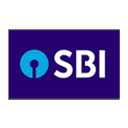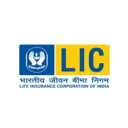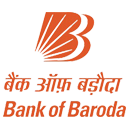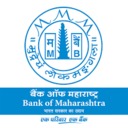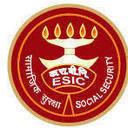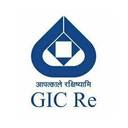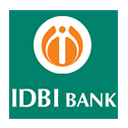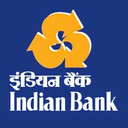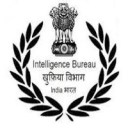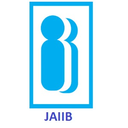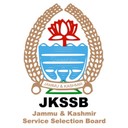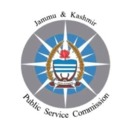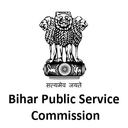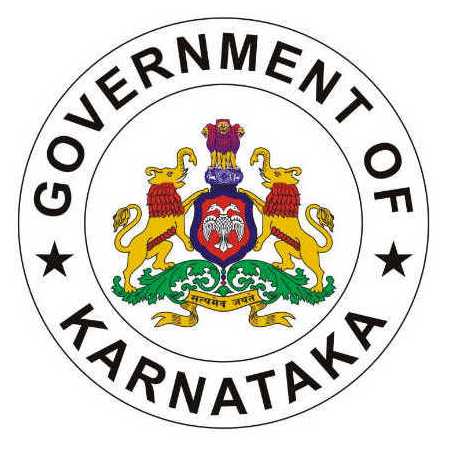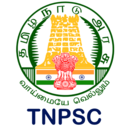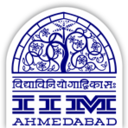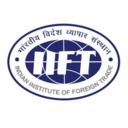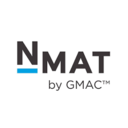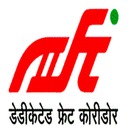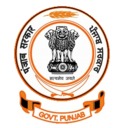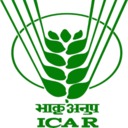IIBF CCP Syllabus 2025: The IIBF Certified Credit Professional (CCP) exam is a well-recognized certification offered by the Indian Institute of Banking and Finance (IIBF). It is designed for banking and finance professionals who want to improve their knowledge in credit management. To do well in the exam, it is important to understand the latest IIBF CCP Syllabus 2025, which includes updated topics and exam patterns. In this blog, we have provided the syllabus, including all the major subjects such as credit risk management, financial statement analysis, working capital assessment, and key regulatory guidelines.
IIBF CCP Syllabus 2025
The Certified Credit Professional (CCP) course broadly covers the following key topics:
- Loan Policy
- Credit Appraisal
- Analysis of Financial Statements
- Project Finance
- Working Capital Management
- Export Credits
- Credit Monitoring
- Management of Impaired Assets
IIBF CCP Syllabus 2025 Module A
The details of the IIBF CCP Introduction & Overview of Credit Syllabus 2025 are as follows:
| Topic | Details Covered |
|---|
| Principles of Lending | Safety, Liquidity, Profitability, Purpose of Loan, Diversification of Risk |
| Model Credit Policy | Importance, Key Contents, Exposure Norms, Model MSE Policy |
| Types of Borrowers | Individuals (Major, Minor, Married Women, Pardhanashin Women, Illiterate Persons), Agents, Attorneys, Joint Borrowers, HUF, Proprietorship Firms, Partnership Firms, Limited Companies, Statutory Companies, Holding Companies, Government Companies, Private & Public Ltd. Companies, LLPs, Registration of Charges |
| Types of Credit Facilities | Cash Credit, Overdrafts, Demand Loans, Bills Finance (Drawee Bill Scheme, Bills Discounting) |
| Credit Delivery | Facility Types, Delivery Modes, Sole Banking, Multiple Banking, Consortium Lending, Syndication, Credit Thrust & Priorities, Credit Acquisitions, Statutory & Regulatory Restrictions on Advances |
| Credit Appraisal | Proposal Validation, Dimensions of Appraisal, Six C's of Credit, Loan Documentation, Credit Risk & Rating, Borrower Creditworthiness, Loan Purpose, Repayment Source, Cash Flow, Collateral |
| Credit Rating | Risk Measurement, Rating Objectives, Internal & External Ratings, Credit Rating Models, Rating Methodology, Comparative Analysis, Sample Rating Formats |
IIBF CCP Syllabus 2025 Module B
The details of the CCP Analysis of Financial Statements Syllabus are as follows:
| Topic | Details Covered |
|---|
| Balance Sheet Analysis | Definition, Importance to Bankers, Classification of Assets (Current, Fixed, Non-current, Intangible, Fictitious) and Liabilities (Current, Medium & Long-Term, Capital & Reserves) |
| Profit & Loss Account | Analysis of P&L Account, Auditor's Note |
| Ratio Analysis | Classification of Ratios, Liquidity Ratios, Leverage Ratios, Activity Ratios, Profitability Ratios, Other Important Ratios, Interpretation, Uses of Financial Ratios |
| Fund Flow & Cash Flow Statements | Techniques and Illustrations of Fund Flow and Cash Flow Statements |
| Project/Term Loan Appraisal | Technical, Commercial/Market, Managerial, Financial, Economic, and Environmental Appraisal |
| Financial Planning | Project Cost & Means of Finance, Cost of Production, Profitability Estimation, Sensitivity Analysis, Break-even Analysis |
| Capital Budgeting Techniques | Pay Back Period Method, Time Value of Money, Net Present Value (NPV), Internal Rate of Return (IRR), Project Life Assessment |
IIBF CCP Syllabus 2025 Module C
The details of the IIBF CCP Working Capital Management Syllabus are as follows:
| Topic | Details Covered |
|---|
| Working Capital Assessment | Concept, Gross & Net Working Capital, Working Capital Gap, Components & Sources of Working Capital, Operating Cycle, Retention Period Computation |
| Assessment Methods | Turnover Method, MPBF (Maximum Permissible Bank Finance) Method, Cash Budget System, Illustrations of Computation, Loan Delivery System |
| Cash Flow & Credit Analysis | Cash Flow Analysis, Commercial Paper, Credit Delivery Methods, CMA Data Analysis |
| Impact of Inadequate WC | Effects of insufficient working capital on business operations |
| Industry-Specific WC Finance | Working Capital Finance for IT & Software Industry |
| Quasi Credit Facilities | Non-Fund Based Facilities, Benefits, Types of Facilities, Letters of Credit (LCs), Assessment of LC Limits, Bills Purchase/Discounting under LC |
| Bank Guarantees | Performance Guarantees, Financial Guarantees, Deferred Payment Guarantees, Guarantee Types & Period of Claim, Limit Assessment |
| Co-acceptance Facilities | RBI Guidelines, Co-acceptance of Bills for Goods and Machinery Supply |
IIBF CCP Syllabus 2025 Module D
The details of the IIBF CCP Other Credits Syllabus are as follows:
| Topic | Details Covered |
|---|
| Export Finance | Pre-Shipment Finance, Export Packing Credit in INR, Running Account Facility, Pre-shipment Credit for Sub-suppliers & Contractors, Agri Export Zones, Export Credit Insurance, PCFC |
| Deemed Exports, Diamond Dollar Account Scheme, Post-Shipment Rupee Export Finance, Purchase/Discounting of Export Bills, Negotiation, Consignment Exports |
| Advance against Duty Drawback, ECGC Guarantee Scheme, Export Credit in Foreign Currency, ECNOS, Interest Rate Subvention, Crystallisation of Export Bills, Gold Card Scheme |
| Priority Sector Lending / Government Schemes | Categories of Priority Sector Borrowers, Direct & Indirect Agriculture Finance, MSME Finance, Micro Credit, Government Schemes (SGSY, SJSRY, SRMS), Education Loans, Housing Loans |
| Finance to Weaker Sections, Export Credit under PSL, Differential Rate of Interest Scheme (DRI), Priority Sector Lending Targets |
| Retail Loans | Features & Benefits of Retail Loans, Comparison with Corporate Banking, Types of Retail Products: Home Loan, Vehicle Loan, Personal Loan, Education Loan, Gold Loan, etc. |
| Model Retail Products & Schemes, Guidelines on CERSAI Registration |
IIBF CCP Syllabus 2025 Module E
The details of the CCP Monitoring, Supervision & Management of Impaired Syllabus are as follows:
| Topic | Details |
|---|
| Documentation | Meaning and Importance: Types of documents, Requisites, Selection, Stamping, Registration.
Execution: Mode of Execution, Limitation Period, Law of Limitation to Guarantor.
Remedy: Un-stamped/ Under-stamped documents. |
| Types of Charges | Purpose and Types: Security, Lien, Negative Lien, Set-Off, Assignment, Pledge.
Banker's Role: Right as a Pledgee, Duties as Pledgee.
Charge Modes: Hypothecation, Mortgages (Simple, Equitable). |
| Follow Up, Supervision & Credit Monitoring | Credit Monitoring: Goals, Tools, Checklist, Statements, QIS Formats.
AI/ML Analytics: For predicting "likely to default".
Supervision & Follow-Up: Processes for Monitoring, Supervision and Follow-up activities. |
| Resolution of Stressed Assets | Identifying Stressed Assets: Strategies for Resolution, Legal Framework, ARCs Role, Case Studies. |
| Fair Practices Code on Lender's Liability | Practices: Loan Processing, Assessment, Disbursement, Administration, Recall/ Repayment, Grievance Redress Mechanisms. |
| Insolvency & Bankruptcy Code (IBC), 2016 | Introduction: NPA Management, Income Recognition, Asset Classification.
Sick Units & NPA: Policies, Guidelines, Provisioning Norms.
Corporate Debt Restructuring: Mechanism, Structure, Operations.
Legal Actions: SARFAESI, Debt Recovery Tribunal, Write-off. |
| Fraud Risk Management in Credit | Early Warning Signals: Identifying potential warning signs, Annexure details.
Red Flagging Accounts: Criteria, Procedures, Actions.
Fraud Identification: Techniques and Reporting Mechanisms.
Forensic Audit: Importance, Process, Techniques.
Wilful Defaulters: Identification, Consequences, Legal implications.
Non-Cooperative Borrowers: Strategies to deal with non-cooperation.
Fugitive Economic Offender: Legal framework and handling.
Look Out Circular: Purpose and Implementation.
Criminal Offenses: Types, Investigative Agencies' role |
IIBF CCP Syllabus 2025 PDF Download
Download the IIBF CCP Syllabus 2025 PDF to get the latest exam pattern, module-wise topics, and study guidelines. Stay updated with IIBF Certified Credit Professional (CCP) syllabus and prepare effectively for the exam. Access the official IIBF CCP syllabus PDF for structured learning and better exam success.
Download IIBF CCP Syllabus 2025 PDF
IIBF CCP Exam Pattern 2025
The Certified Credit Professional (CCP) Exam conducted by the Indian Institute of Banking and Finance (IIBF) assesses candidates' proficiency in credit management within the banking sector. Understanding the exam pattern is crucial for effective preparation. Here's a detailed overview of the IIBF CCP Exam Pattern for 2025:
| Exam Component | Details |
|---|
| Mode of Examination | Online (Computer-Based Test) |
| Medium of Exam | English |
| Question Type | Multiple-Choice Questions (MCQs) |
| Total Questions | 100 |
| Total Marks | 100 |
| Marking Scheme | 1 mark per question, No negative marking |
| Duration | 2 Hours |
| Exam Schedule | 2nd & 4th Saturdays |
System Requirements for IIBF Remote Proctored Exam
To appear for the IIBF Certified Credit Professional Exam 2025 in remote proctored mode, candidates must ensure that their system meets the specified technical requirements. These system specifications are essential to maintain the integrity of the exam process and to avoid any technical disruptions during the examination.
| Category | Requirement |
|---|
| Device | Desktop or Laptop only (Mobile phones and tablets are not allowed) |
| Operating System | Windows 8 or Windows 10 |
| Browser | Google Chrome (version 75 or above) with cookies and pop-ups enabled |
| RAM | Minimum 4 GB |
| Processor | Intel i3 5th Generation (2.2 GHz) or higher |
| Webcam | Required (HD quality preferred) |
| Microphone | Good quality mic is mandatory |
| Pop-up Blocker | Must be disabled |
| Internet Connection | Stable internet with at least 2 Mbps upload speed |
CCP Online Examination Guidelines 2025
The Indian Institute of Banking and Finance (IIBF) conducts the Certificate Examination in a fully online remote proctored mode. Candidates are required to follow specific instructions before, during, and after the examination to ensure a smooth and fair assessment process. Below are the complete guidelines related to the exam day process, system requirements, and result declaration.
| Section | Details |
|---|
| Mode of Exam | Conducted in remote proctored mode on a predetermined date and time. Candidates must appear from a secure environment. |
| Login Time | Candidates must log in at least 30 minutes before the scheduled exam time. |
| Identity Verification | Proctor verifies candidate's face with registered photo. Candidate must present a valid original photo ID, such as: – Aadhaar / e-Aadhaar – Employer's ID Card – PAN Card – Driving License – Election Voter ID – Passport |
| Exam Environment Check | Candidate may be asked to show a 360° view of the room using the webcam. Desk/table must be clear with no reference materials or gadgets. |
| Prohibited Items | - Books, notes, chits - Mathematical tables, slide rules, stencils - Mobile phones, headsets (wired/wireless) - Any other electronic devices |
| Rough Sheet Use | If used, both sides of the rough sheet must be shown to the proctor before and after the exam. |
| Live Monitoring | The entire exam is live monitored via webcam and microphone. Computer screen, browser, keyboard, and mouse activity are also monitored. |
| Communication During Exam | The proctor may communicate with the candidate through a chat box for instructions or warnings. |
| Unfair Practices | Any suspicious activity or malpractice will result in immediate warning or termination of the exam. Action will depend on the severity. |
| Exam Submission | Upon completion, a provisional scorecard will be displayed on the screen immediately. |
Join the IIBF CCP (Certified Credit Professional) Online Course Today




